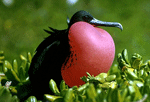ALTHOUGH Guyana is one of the thirteen (13) countries comprising the sub-continent of South America, we are privileged to be considered also as a part of the Caribbean Region.  Guyana, with its many natural resources, its rich agricultural lands and its potential to produce a significant amount of food crops, is generally perceived as the ‘bread-basket of the Caribbean’.
Guyana, with its many natural resources, its rich agricultural lands and its potential to produce a significant amount of food crops, is generally perceived as the ‘bread-basket of the Caribbean’.
The Caribbean is a Region of rich cultural and diverse ethnicity, and due to its unique geographic location and the fact that the Region comprises a chain of small islands in the Caribbean Sea, the Region is seen as one of the most beautiful natural environments in the world. Coral reefs, mangrove swamps and tropical rainforests provide habitats for a wide variety of plants and animals. Many species found in the Caribbean are known to be endemic species (species restricted to a particular geographical area).
Environmental concerns for the Caribbean
Whilst one may wish to assume that the Caribbean is an almost pristine environment, the reality is that this is not so. The Caribbean, like many other regions of the world, is faced with environmental issues which have the potential or existing adverse effects on the environment. One of the major environmental problems for the Caribbean is Climate Change. This phenomenon is associated with several environmental issues faced by the Caribbean which includes rising sea levels, which have led to increased erosion of coastal areas and destruction of infrastructure such as roads; unpredictable weather patterns which affect the agriculture sector and species populations.
Generally, though, the Caribbean is a hotspot for tourism which means increased pressures on the use and management of natural resources in the Region. Issues related to waste management, water pollution and energy use require constant attention as they contribute to daily environmental challenges. Some of these environmental issues currently affect the livelihoods of the people of the Caribbean. However, positive action has been taken to address these negative issues and curb their effects for the preservation of the Caribbean as we know it.
Progress with Environmental Action
At the international level, the United Nations Environment Programme (UNEP) has been monitoring and addressing environmental concerns in the Caribbean through its Caribbean Environment Programme (CEP). CEP’s mission is to ‘promote Regional co-operation for the protection and sustainable development of the marine environment of the wider Caribbean Region’. Its work surrounds the Convention for the Protection and Development of the Marine Environment of the wider Caribbean Region, otherwise known as the Cartagena Convention. Three protocols under this convention address specific environmental issues in the Caribbean: oil spills, specially protected areas and wildlife, and land-based sources and activities of marine pollution.
To carry out its role, CEP operates under three sub-programmes: Assessment and Management of Environmental Pollution (AMEP), Specially Protected Areas and Wildlife (SPAW) and Communication, Education, Training and Awareness (CETA).
The work of UNEP-CEP has been instrumental in facilitating proper environmental management in the Caribbean, sustaining the natural beauty of the area and securing the livelihoods of its people for years to come. However, the pressure continues and work must be continued with zeal as the global problem of climate change continues. Individually, the countries within the Region have also been taking innovative steps towards protecting the environment. More governments are now appreciative of the fact that the degradation of the environment impacts the quality of life of citizens and have established local authorities to maintain environmental stability. These local environmental management authorities help to support the need for public awareness and guidance in dealing with best environmental practices.
We all have a role to play when it comes to the care and protection of the environment. Let us take small steps that will contribute to both local and global environmental sustainability.
You can share ideas and questions by sending your letters to: ‘Our Earth, Our Environment’, C/o EIT Division, Environmental Protection Agency, Ganges Street, Sophia, GEORGETOWN, or email eit.epaguyana@gmail.com
Activity: Learning about birds of the Caribbean
Many countries have designated a national animal/bird which is usually unique to them in one way or the other. For example, Guyana’s National Bird is the Canje Pheasant!
Match these National Birds (animals) to their respective countries:
 |
Grenada (hint: associated with peace) |
| Canje Pheasant | |
 |
Jamaica (hint: what a long tail) |
| Magnificant Frigatebird |
|
 |
Guyana (hint: bad hair day) |
| Scarlet Ibis | |
 |
Antigua (hint: big red) |
| Grenada Dove | |
 |
Trinidad (hint: curved bill) |
| Doctor-bird |



.jpg)








